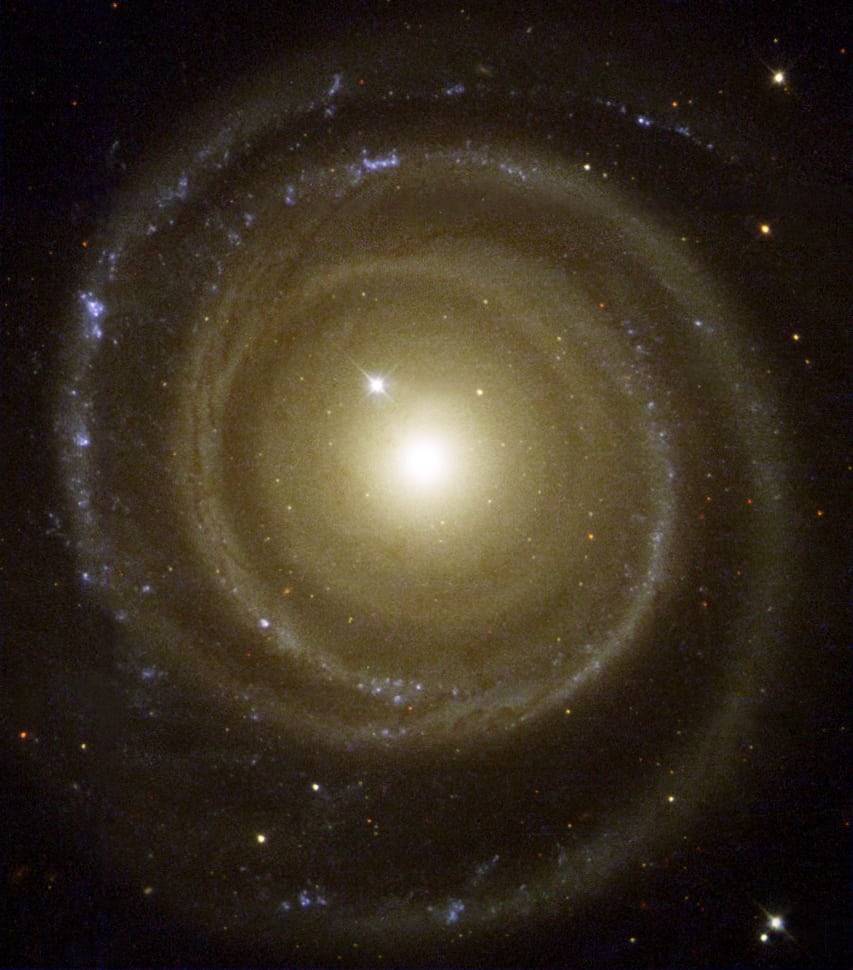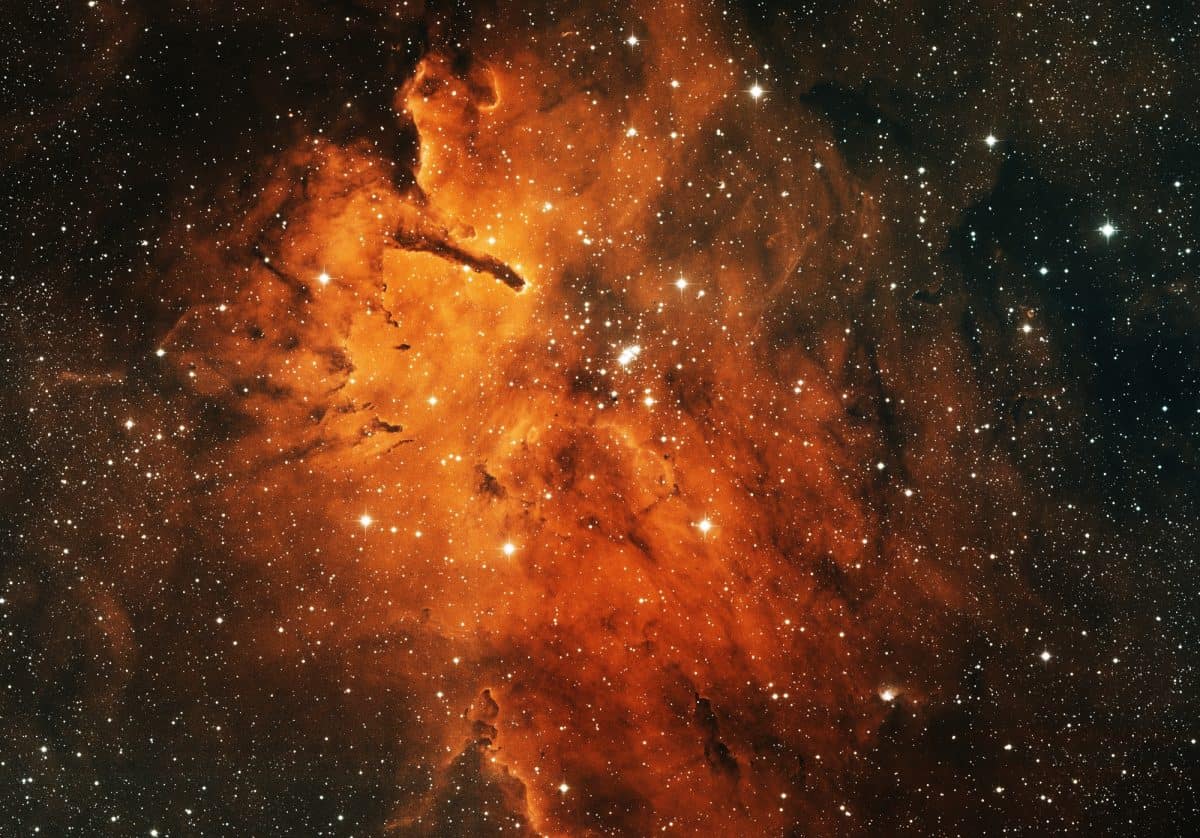Blog
The boundary between the terrestrial atmosphere and the outer space, known as the Karman line, is located at an altitude of about 80 kilometers, which is 20 percent closer than previously thought. Although the new definition does not matter for launching rockets and spacecraft, it can clarify the legal debate in which the rules of space policy and commercial space flights will be established. Until now, it was believed that outer space is 100 kilometers above sea level. The Karman line name was given to the height by the name of the American scientist Theodor von Karman. He first determined that at about this distance from the surface the atmosphere becomes sparse, and aerodynamic aviation becomes impossible, since the speed of the aircraft, which is necessary to create a sufficient lift, exceeds the first space velocity. Therefore, to achieve high altitudes, it is already necessary to use the means of astronautics. But the traditional definition could not stand the evidence given by Jonathan McDowell, an astrophysicist at the Harvard-Smithsonian Center for Astrophysics in Cambridge, USA. As a hobby, McDowell is conducting a detailed account of the launch of the missiles. He often has to decide which launches qualify as the achievement of outer space and which do not, and the limit of 100 kilometers has never seemed right to him. He preferred mesopause, the coldest point in the Earth’s atmosphere, located at an altitude of about 85 kilometers. McDowell deemed it necessary to go deeper into the matter, knowing that companies such as Virgin Galactic and Blue Origin will soon begin offering tourist space flights.
more...Philip William Seamen (28 August 1926 – 13 October 1972, Lambeth) was an English jazz drummer.
With a background in big band music, Seamen played and recorded in a wide range of musical contexts with virtually every key figure of 1950s and 1960s British jazz. Notable examples included Joe Harriott, Tubby Hayes, Stan Tracey, Ronnie Scott, Dick Morrissey, Harold McNair, Don Rendell, Victor Feldman, Dizzy Reece, Tony Coe, Tony Lee, and George Chisholm, among others. Later in his career he worked with Alexis Korner and Georgie Fame, and had a spell with Ginger Baker’s Air Force, the leader of the band being Seamen’s foremost disciple. Addiction to alcohol and other drugs hampered his career.
Seamen began playing drums at the age of six, turning professional at the age of 18 by joining Nat Gonella and his Georgians in 1944. He joined the Tommy Sampson Orchestra in 1948, and by 1949, Seamen and tenor saxist Danny Moss had formed a bebop quintet from within the ranks and which was featured on a radio broadcast by the orchestra in September 1949.
more...Kenneth Sidney “Kenny” Drew (August 28, 1928 – August 4, 1993) was an American jazz pianist.
Drew was born in New York City in 1928 and received piano lessons from the age of five. He attended the High School of Music & Art in Manhattan. Drew’s first recording, in 1950, was with Howard McGhee, and over the next two years he worked in bands led by Buddy DeFranco, Coleman Hawkins, Lester Young, and Charlie Parker, among others. After a brief period with his own trio in California, Drew returned to New York, playing with Dinah Washington, Johnny Griffin, Buddy Rich, and several others over the following few years. He led many recording sessions throughout the ’50s, and in 1957 appeared on John Coltrane‘s album Blue Train.
https://www.youtube.com/watch?v=sisTQUzxruM
more...https://www.youtube.com/watch?v=xgniaJujhvo
more...NGC 4622 is a face-on unbarred spiral galaxy with a very prominent ring structure located in the constellation Centaurus. The galaxy is a member of the Centaurus Cluster.
The spiral galaxy, NGC 4622 (also called backward galaxy), lies approx. 111 million light years away from Earth in the constellation Centaurus. NGC 4622 is an example of a galaxy with leading spiral arms. In spiral galaxies, spiral arms were thought to trail; the tips of the spiral arms winding away from the center of the galaxy in the direction of the disks orbital rotation. In NGC 4622, however, the outer arms are leading spiral arms; the tips of the spiral arms point towards the direction of disk rotation. This may be the result of a gravitational interaction between NGC 4622 and another galaxy or the result of a merger between NGC 4622 and a smaller object.
NGC 4622 also has a single inner trailing spiral arm.Although it was originally suspected that the inner spiral arm was a leading arm, the observations that established that the outer arms were leading also established that the inner arm was trailing.
more...Alice Coltrane (née McLeod, August 27, 1937 – January 12, 2007), also known by her adopted Sanskrit name Turiyasangitananda or Turiya Alice Coltrane, was an American jazz musician and composer, and in her later years a swamini. One of the few harpists in the history of jazz, she recorded many albums as a bandleader, beginning in the late 1960s and early 1970s for Impulse! and other major record labels. She was the second wife of jazz saxophonist and composer John Coltrane.
In January 1966, Alice Coltrane replaced McCoy Tyner as pianist with John Coltrane’s group
more...Lester Willis Young (August 27, 1909 – March 15, 1959), nicknamed “Pres” or “Prez”, was an American jazz tenor saxophonist and occasional clarinetist.
Coming to prominence while a member of Count Basie‘s orchestra, Young was one of the most influential players on his instrument. In contrast to many of his hard-driving peers, Young played with a relaxed, cool tone and used sophisticated harmonies, using what one critic called “a free-floating style, wheeling and diving like a gull, banking with low, funky riffs that pleased dancers and listeners alike”.
Known for his hip, introverted style, he invented or popularized much of the hipster jargon which came to be associated with the music.
Lester Young was born in Woodville, Mississippi, near New Orleans, Louisiana, and grew up in a musical family. His father, Willis Handy Young, was a teacher and band leader, his brother, Lee Young, was a drummer, and several other relatives performed professionally.
more...Beginish was a traditional Irish music band that attracted a lot of attention in the late 1990s.
more...Messier 100 (also known as NGC 4321) is an example of a grand design intermediate spiral galaxy located within the southern part of constellationComa Berenices. It is one of the brightest and largest galaxies in the Virgo Cluster, located approximately 55 million light-years distant from Earthand has a diameter of 107,000 light years. It was discovered by Pierre Méchain on March 15, 1781 and was subsequently entered in Messier’s catalogue of nebulae and star clusters after Charles Messier made observations of his own on April 13, 1781. The galaxy was one of the first spiral galaxies to be discovered, and was listed as one of fourteen spiral nebulae by Lord William Parsons of Rosse in 1850. Two satellite galaxies named NGC 4323–connected with M100 by a bridge of luminous matter–and NGC 4328 surround M100.
more...Branford Marsalis (born August 26, 1960) is an American saxophonist, composer and bandleader. He has been cited as “arguably the most respected living U.S. jazz instrumentalist”. While primarily known for his work in jazz as the leader of the Branford Marsalis Quartet, he also performs frequently as a soloist with classical ensembles and has led the group Buckshot LeFonque.
Leon Redbone (born August 26, 1949) is an American singer-songwriter, guitarist, actor and voice actor specializing in jazz, blues, and Tin Pan Alleyclassics. Recognized by his Panama hat, dark sunglasses, and black tie, Redbone first appeared on stage in Toronto, Ontario, Canada in the mid-1970s. He has also appeared on film and television in acting and voice-over roles.
Redbone’s concerts blend performance, comedy, and skilled instrumentals. Recurrent gags involve the influence of alcohol and claiming to have written works originating well before he was born (Redbone favors material from the Tin Pan Alley era circa 1890s to 1910). He sang the theme to the 1980s television series Mr. Belvedere and has released sixteen albums.
According to a Toronto Star report in the 1980s, he was once known as Dickran Gobalian, and he came to Canada from Cyprus in the mid-1960s and changed his name via the Ontario Change of Name Act. However, an article about producer John H. Hammond in a 1973 issue of the Canadian jazz magazine Coda states that he was a native of Philadelphia who moved to Toronto: “Sitting next to Hammond was a young white musician named Leon Redbone from Philadelphia, but currently residing in Toronto”.
more...This image was obtained with the wide-field view of the Mosaic camera on the KPNO 0.9m-meter telescope at Kitt Peak National Observatory. NGC 6820 is a diffuse emission nebula that surrounds the open cluster of stars NGC 6823 (at the center of the image). The intense light from the hot, massive stars in the cluster is blowing away the gas in the nebula, causing the distinctive “pillar” shapes on the left side of the image. The image was generated with observations in Hydrogen alpha (red), Oxygen [OIII] (green) and Sulfur [SII] (blue) filters. In this image, North is up, East is to the left.
NGC 6820 is a small reflection nebula near the open cluster NGC 6823 in Vulpecula. The reflection nebula and cluster are embedded in a large faint emission nebula called Sh 2-86. The whole area of nebulosity is often referred to as NGC 6820.
M27, the Dumbbell Nebula, is found three degrees to the east, and α Vulpeculae three degrees to the west.
Open star cluster NGC 6823 is about 50 light years across and lies about 6000 light years away. The center of the cluster formed about two million years ago and is dominated in brightness by a host of bright young blue stars. Outer parts of the cluster contain even younger stars. It forms the core of the Vulpecula OB1 stellar association
more...
Pat Martino (born August 25, 1944) is a jazz guitarist and composer within the post-bop, fusion, mainstream jazz and soul jazz idioms. He is noted for his mathematical approach to the instrument (he has released textbooks such as Linear Expressions) and advanced knowledge of music theory.
Martino was born Pat Azzara in South Philadelphia. He began playing professionally at the age of 15 after moving to New York City. He lived for a period with Les Paul and began playing at jazz clubs such as Smalls Paradise. He later moved into a suite in the President Hotel on 48th Street. He would play at Smalls for six months of the year, and then in the summer play at the Club Harlem in Atlantic City.
more...Wayne Shorter (born August 25, 1933 Newark, NJ) is an American jazz saxophonist and composer.
Shorter came to wide prominence in the late 1950s as a member of, and eventually primary composer for, Art Blakey‘s Jazz Messengers. In the 1960s, he went on to join Miles Davis‘s Second Great Quintet, and from there he co-founded the jazz fusion band Weather Report. He has recorded over 20 albums as a bandleader.
Many of Shorter’s compositions have become jazz standards, and his output has earned worldwide recognition, critical praise and various commendations. Shorter has won 10 Grammy Awards. He has also received acclaim for his mastery of the soprano saxophone (after switching his focus from the tenor in the late 1960s), beginning an extended reign in 1970 as Down Beat‘s annual poll-winner on that instrument, winning the critics’ poll for 10 consecutive years and the readers’ for 18. The New York Times described Shorter in 2008 as “probably jazz’s greatest living small-group composer and a contender for greatest living improviser.” In 2017, he was awarded the Polar Music Prize.
https://www.youtube.com/watch?v=o40smfOyIso
more...Songhoy Blues, all the way from Timbuktu. Formed by three young people who, despite the ban on music in their region, continued their work from their exile in Bamako.
more...More Posts
- Victoria Spivey
- Flamenco Fridays with Paco Peña
- Daily Roots with Ken Boothe
- The Cozmos with NGC 7293
- Justin Hayward
- Nikhil Ranjan Banerjee
- Duško Gojković
- Robert Parker
- James “Son” Thomas
- World Music with Daymé Arocena
- Daily Roots with Cornell Campbell
- The Cozmos with NGC 7822
- Paul Simon
- Pharoah Sanders
- Lee Konitz
- Ray Brown
- Art Tatum
- World Music with Tony Allen
- Daily Roots with Mikey General
- Paddy Moloney Memorial



